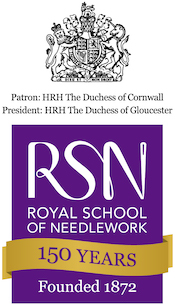Latest news
Keep up to date with all the latest news from the Royal School of Needlework
Dressing the Red Carpet with Respect for the Environment
29th May, 2020
During these strange times with the RSN Embroidery Studio currently closed, we have been looking back at pieces we have worked on over the past years. Sustainability is an important consideration in everything we do and when it comes to restoration and conservation, it is all about sustaining textiles for the future whether they are 50 years old or 300 years old!
Indeed, some readers may be interested to read the recent British Fashion Council (BFC) and The Council of Fashion Designers of America (CFDA) joint manifesto urging designers and businesses to ‘reset and rethink’ their current business models and ways of work. With sustainability, still at the forefront of the conversation both governing bodies are urging the industry to change; by slowing down the pace at which garments are produced, only focusing on two collections per year and reducing brands and buyers travel to international Fashion Weeks, to lower individual carbon footprint.
In 2013, the RSN Embroidery Studio worked the winning design of Suzy Amis Cameron’s Eco-Fashion Campaign ‘Red Carpet Green Dress’. The ‘Lava Dress’ was worn by actress Naomie Harris and unveiled at the 2013 Oscar Academy Awards ‘red carpet’.
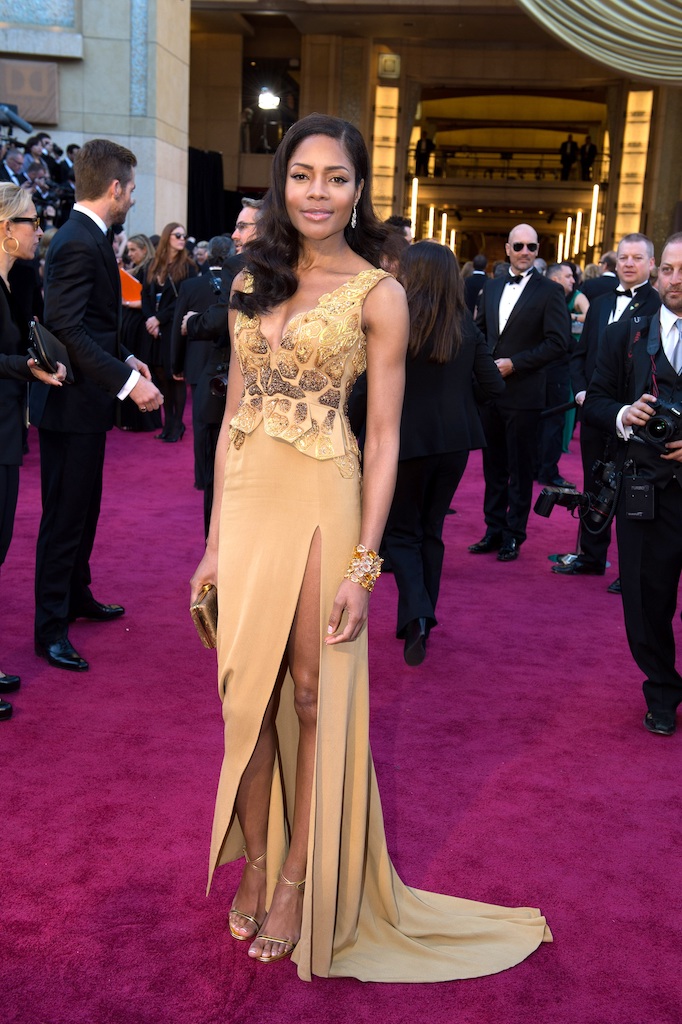 Naomie Harris at the Oscars Academy Awards 2013. © AMPAS |
Legendary designer Dame Vivienne Westwood mentored the winning designer, Michael Badger, through the creation of his design in her London-based studio. After Westwood’s couturiers logged 120 hours on the gown, it was transported to the RSN where a team of 22, including the winner himself, logged a further 680 hours of cherished hand embroidery. By using an organic cotton thread, there is a major reduction of carbon footprint showcasing the importance of hand embroidery, over machine embroidery, as a sustainable art form.
The embroidery was worked onto the Global Organic Textile Standard (GOTS) certified organic silk Crêpe De Chine. The dyeing process employed golden rod and a renewable biodegradable natural plant source, a humble camomile, which is also used medicinally and for camomile tea. Since there were no water pollutants or chemicals used, any waste produced was transferred to a compost heap. The dyeing process, completed by ‘Ao Textiles’, a design consultancy committed to the research and production of sustainable luxury textiles, received a stamp of approval from Greenpeace International’s Detox Fashion Campaign.
The dress was embroidered with old vintage glass beads from the 1920s through to the 1960s, the antique Japanese metal thread was old stock that had been with the RSN for many years, probably moving with us from Princes’ Gate in 1987. The Japanese thread was couched down with cotton thread using a combination of couching and Italian Shaded couching. This form of couching allowed us to shade through the rich colours giving tonal value to each of the individual elements. Each individual element was fluid in the interpretation but was monitored to ensure that shading on all the elements worked as a whole piece, resulting in the shading drifting through the bodice and upper skirt. This shading was additionally enhanced by the colouring and density of the beads chosen. There were larger nugget type pieces of gold which were in fact sweetie papers, bonded to fabric and cut sheer to the edge of the sweetie paper so that none of the backing fabric showed. Before being attached, they were scrunched to add texture and then applied with tiny discreet stitches.
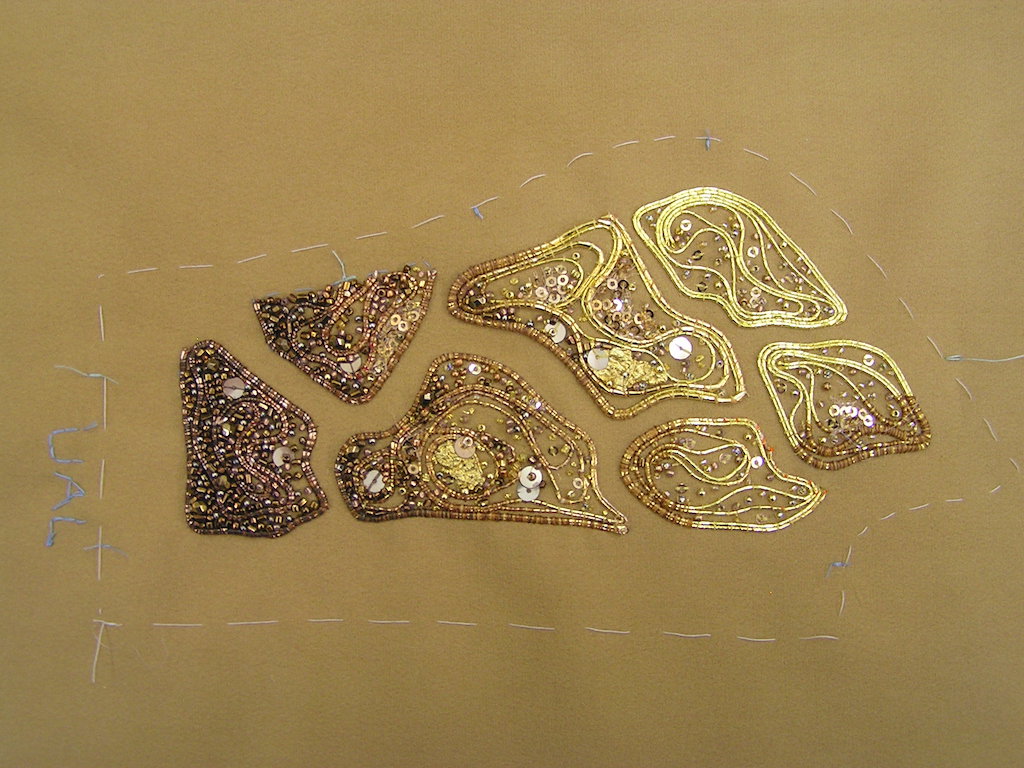
At the RSN, we train our students in the same way, regardless of which course they attend. This allows us to work in teams of Embroiderers all fitting together in such a way that the piece looks as if it has been worked by one person. With the timeframe we had, and the quantity of embroidery to complete, we worked in a large team of 22 Embroiderers, in shifts, to increase the number of hours we had per day.
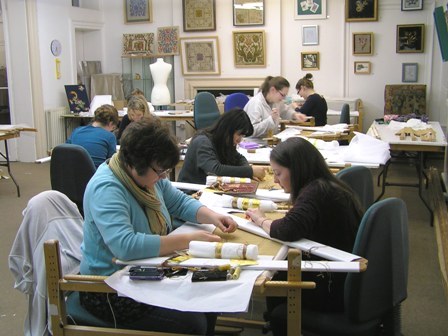
It was a beautiful design to embroider and exciting to be able to use threads and fabric from our stock knowing that they were being used to create a piece that will last for many years to come and reducing the need for new threads. Many of the threads would have been seen during searches of stock for previous commissions, and we would have dreamt of ways to use them!
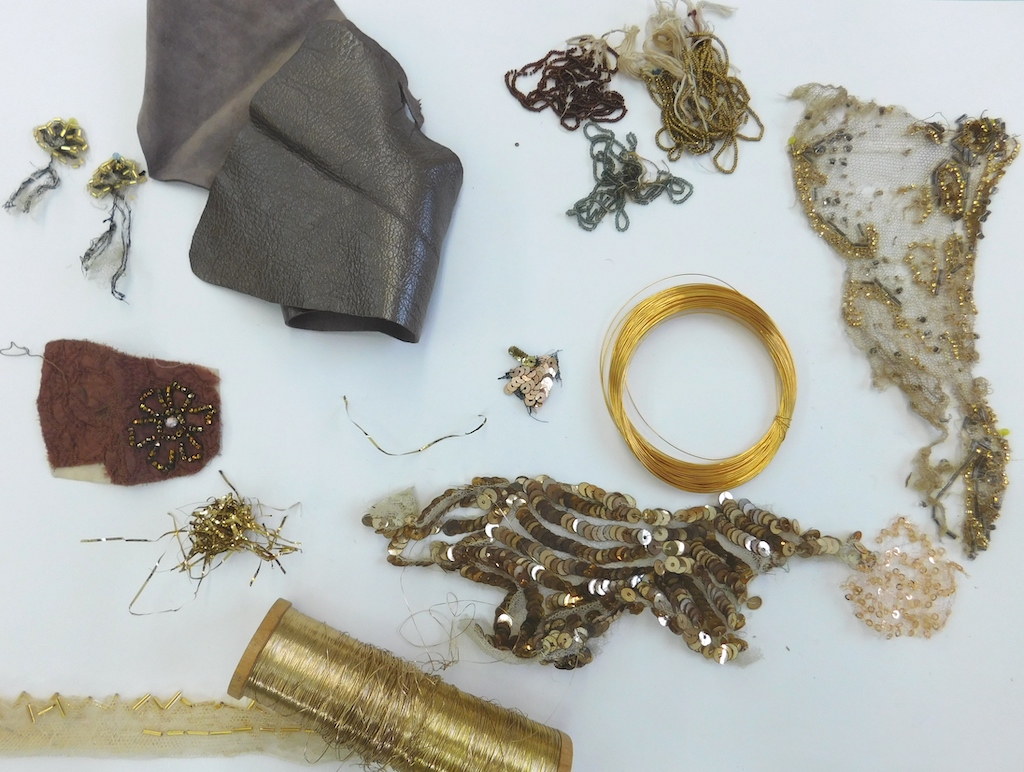
Beautiful embroidery embellishment is not just for pretty dresses but for everyone regardless of budget or gender. We produced in more recent years a version of the ‘Lava Dress’ embroidery as a ‘His and Hers’ gift, a brooch and cufflinks set. The embroidery had to be scaled down and we were limited to the finer vintage gold threads and beads, sadly there was no room for the sweetie papers! We did introduce a stiffer metallic thread, known as Pearl Purl, to act as a wire at the edge to give the items more rigidity against wear and tear. It was a challenge to work the embroidery scaled down , however, we are sure you will agree that the end result was worth it.
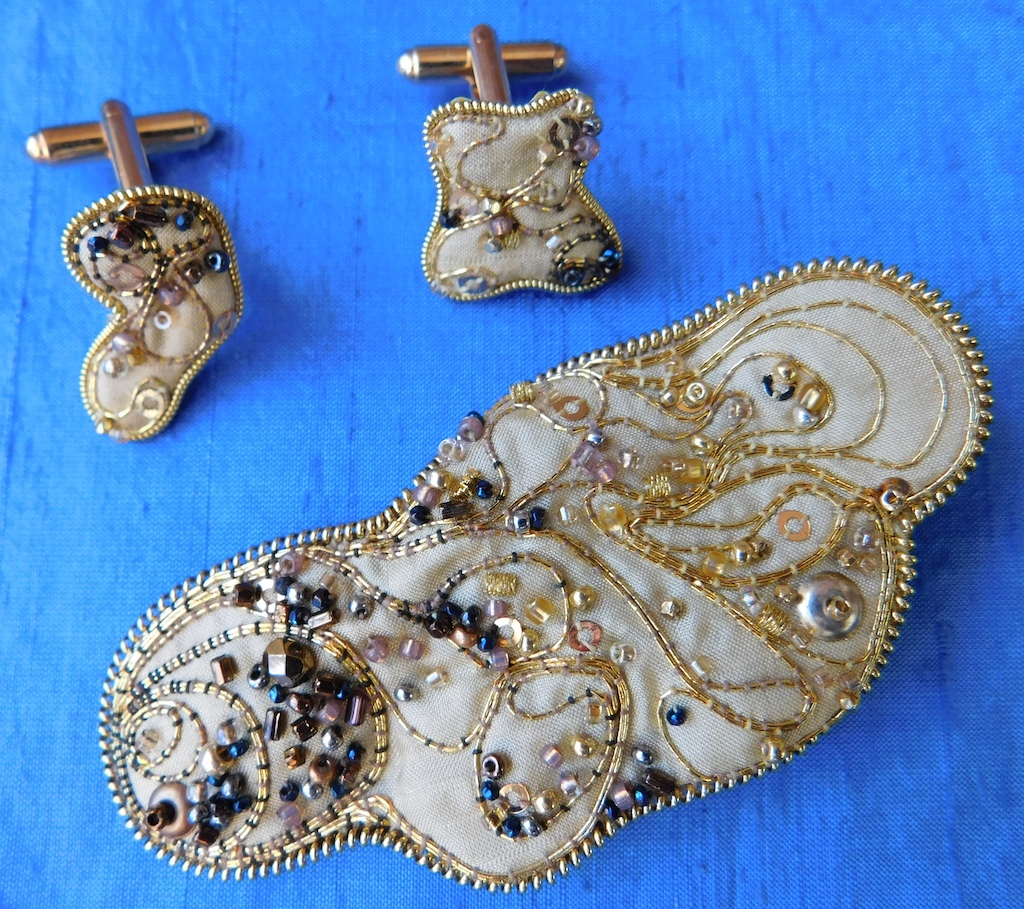
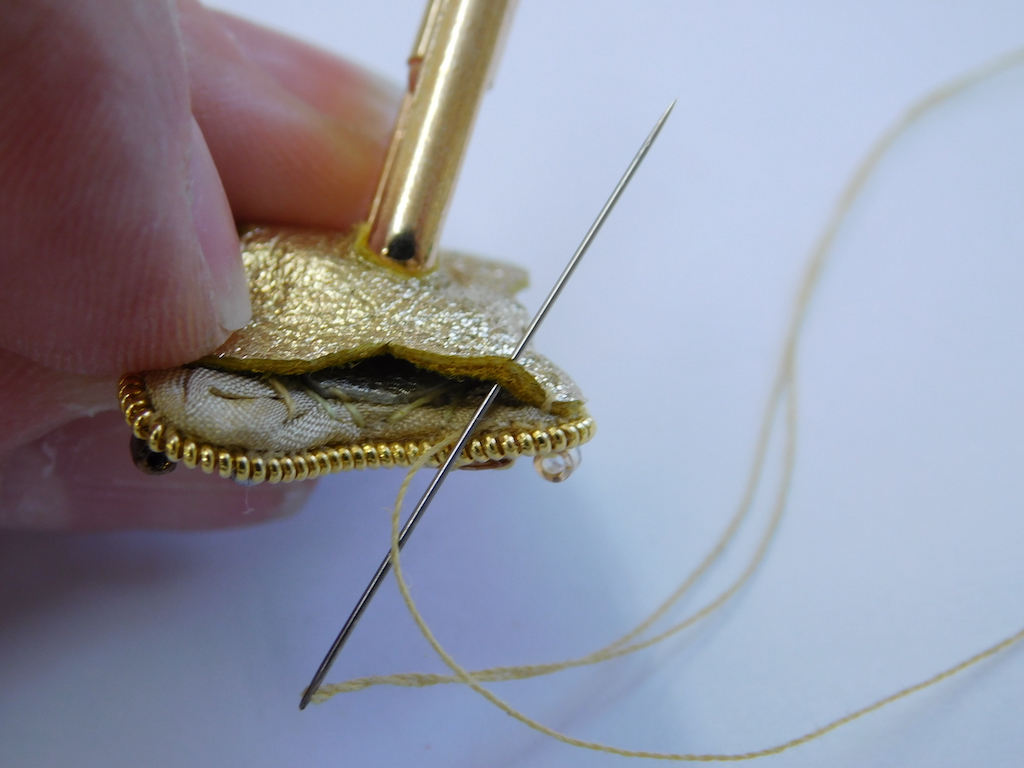
The ‘Red Carpet Green Dress Global Design Content 2020’ is open for entry until 30 July.
You never know, maybe next year we will work in conjunction with the future contest winner and see what is in the RSN cupboards to use next time!
